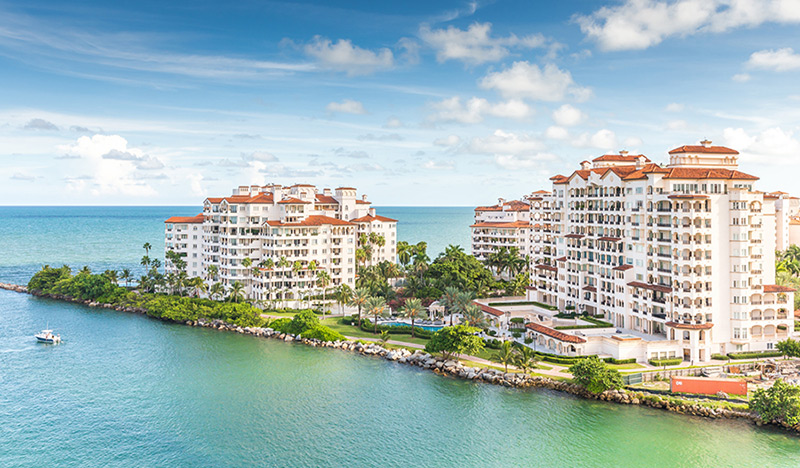Wealth Preservation in Real Estate: India Vs. U.S.A
In my capacity as Managing Director of Nysa EB-5, the American Immigration Investment program, I am often asked about the security of investing in real estate based projects in the United States where returns do not nearly measure up to traditional Indian nominal rates. For example, in the United States, typical bank deposits typically earn less than 1% per annum as compared to 9-10% often seen at the best Indian banks. However, particularly in the area of wealth preservation, one must analyze return in the context of real return as opposed to nominal return.
The Indian Rupee (INR), which was at par with the dollar at its independence in 1947, depreciated by almost 69 times since then at its all-time low in late August 2013. Currently hovering around Rs. 60 per USD, the currency is still considered highly volatile. According to an HSBC release in early 2014, “while the INR may have passed the worst…it will remain sensitive to sudden changes in broad risk dynamics.” Even a fixed deposit account giving 9% annual interest amounts to just 1% in real returns when accounting for inflation, currently at 8.1% y-o- y.
This phenomenon carries over to real estate in a big way. Coupling the currency volatility with the on going inflation hovering near the double digits, everything else equal, the value of a real estate asset can decrease by as much as 20% in a matter of one quarter. So prices can go up even as consumer demand is being weakened by the same factors. What many investors don’t realize is that Indian returns have traditionally been mitigated by this currency devaluation coupled with much higher relative inflation. The double whammy of currency decline coupled with high inflation actually brings Indian returns in terms of real value at or below historical and current U. S. returns.
Once returns are adjusted for currency and inflation, one then must look to the stability of individual markets per se. The American economy, as well as its financial and political environments, tend to be make for a relatively stable global safe haven as opposed to emerging markets like India. To be sure, the savvy investor if he times his investment just right can enjoy enormous upswings. The trick in such volatile conditions, is when to jump out. After all money is a commodity like any other and it tends to chase opportunity. But once the pendulum swings from wealth creation to wealth preservation, the prudent investor is best advised to seek more conservative ground with returns which may not be as exciting, but are far more secure. This is much like the difference in employment considerations between a worker starting his career as opposed to one getting ready for retirement.
In the immigration investment business this situation is further sensitized by the immigrant seeking to relocate to completely a new environment with associated aspirational pressures, lifestyle changes, and societal indoctrination. It is consistently our recommendation that this investor not move forward with a risk- ladened portfolio. Inasmuch as the immigrant investor will face risk and uncertainty in the non-financial aspects of life, it is prudent that they do their best to take financial risk out of the equation.
A Perspective on Real Estate Investment
While emerging real estate markets like India can provide immense wealth creation opportunities in a short period of time, with property prices doubling every few years, the U.S. still holds the crown for the preservation of wealth. The returns may not be as gaudy as emerging markets in their best years but the consistency and guarantee of the principal is what the U.S. can offer over its fast-growing and volatile peers like India. According to a survey by the Association of Investors in Foreign Real Estate, the U.S. leads international markets in countries providing the most stable and secure real estate investments.

Property Rights and Institutions
In many ways the cornerstone of the U.S. economy is its protection of property rights. The U.S. has strong property laws in place that protect the capital placed within its economy, and robust and transparent institutions that guarantee the implementation of said body of laws. Consequently the U.S. provides the ideal opportunity for investors interested in making investments in a safe and certain environment. In such an environment, an investor’s capital investment is exposed to the lowest level of appropriation risk from the government or any third parties, regardless of the investment horizon established by the investor.
Furthermore, property title insurance, fundamental to all U.S. real estate transactions, acts as a further safeguard to any potential unseen property related disputes, which may arise later. So the American system carries with it the inherent ability to store value and wealth in an environment that ensures its transferability to heirs and future generations, effectively creating a setting that is ideal for intergenerational wealth preservation.
The Indian real estate industry, on the other hand, is infamous for its constant plague of legal issues. Disputes in real estate take anywhere from 20 to 30 years to get resolved in the Indian judiciary system. Violent threats and intimidation are commonplace amongst the disputing parties. In the state of Punjab alone, 2,500 cases are filed for such matters on an annual basis.
In India, land records are incomplete, opaque, and stored in inaccessible places. This is a major reason leading up to such disputes and a lot of times these disputes are within the family. In the 2013 international property rights index, India was ranked 57 out of 130 and ranks 95 out of 174 in the Transparency International’s corruption perceptions index.
Investment Environment
Lastly, it is imperative to look at the current investment environment in the U.S. following the most recent financial crisis, and the opportunities it has created. The burst of the most recent housing bubble dramatically reduced creditors willingness to lend, which in turn sharply reduced demand, creating a “buyers-market” environment. Today, the market has slowly recovered, but there is still tremendous opportunity for savvy investors. Real estate prices are increasing at healthy double-digit rates and will continue to do so in the coming few years. The residential market in the U.S. is currently 20.81% below its 2007 peaks and the commercial market is 13.19% below its peak.
The Indian market, on the other hand, is facing a slowdown after years of high growth. Key markets such as Delhi, Bangalore, and Hyderabad have especially felt the pinch in the last few months.
Conclusion
When it comes to capital preservation, the asset appreciation or depreciation is a secondary factor. One has to consider the present value of the cash flows generated by the property, which will not change significantly even when market conditions take dramatic swings. Capital appreciation is more of an icing on the cake with this strategy. It is important to note that U.S. properties offer rental yields of 6 to 12% while its Indian counterparts offer a significantly lower yield at 2-3% for residential and 6 to 8% for commercial properties.
In closing, compared to India, the U.S. remains the most optimum alternative for investors interested in wealth preservation and making safe investments. While rapidly rising demand in India may offer lucrative short-term returns, it comes with increasing levels of risks (property disputes, currency and inflation risks, and market volatility).




